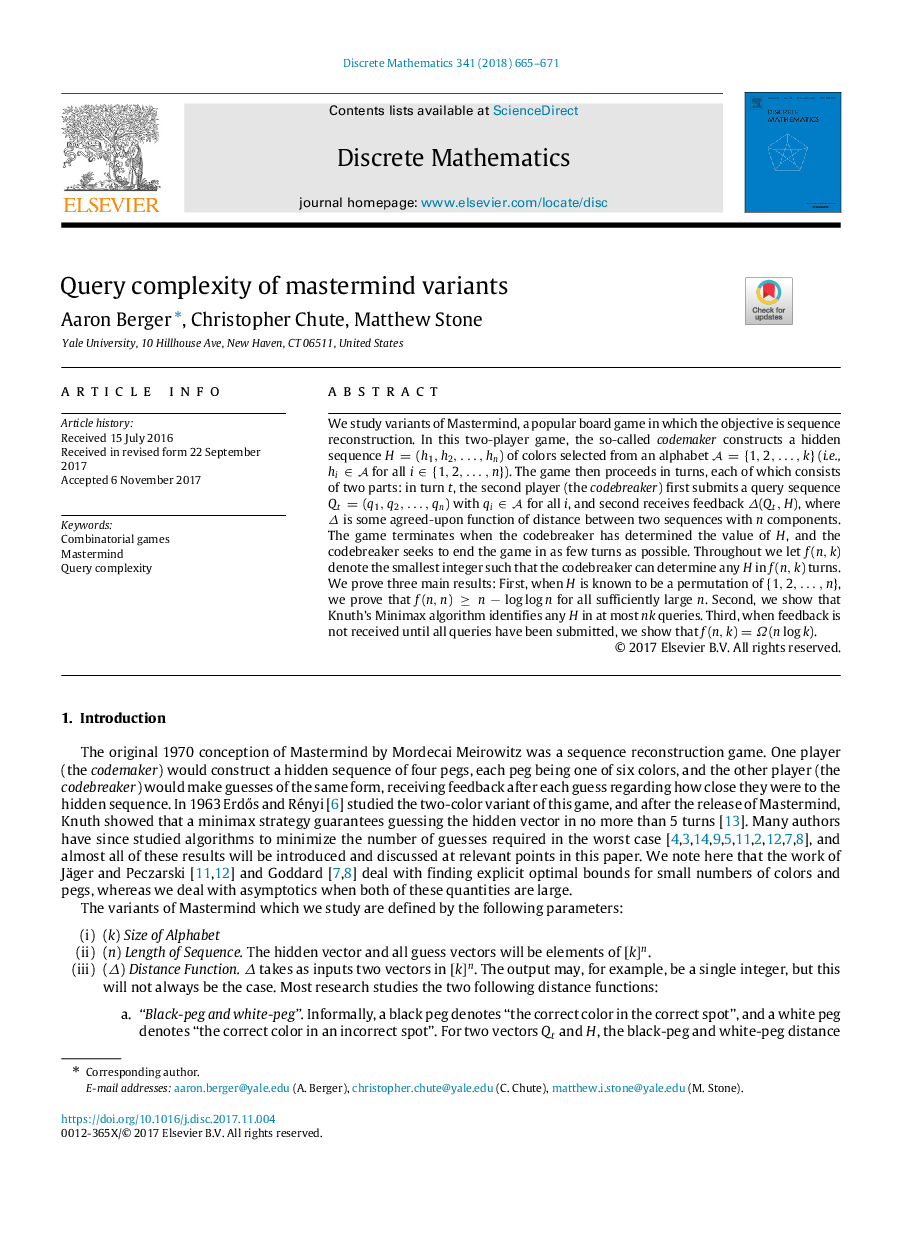| Article ID | Journal | Published Year | Pages | File Type |
|---|---|---|---|---|
| 8903067 | Discrete Mathematics | 2018 | 7 Pages |
Abstract
We study variants of Mastermind, a popular board game in which the objective is sequence reconstruction. In this two-player game, the so-called codemaker constructs a hidden sequence H=(h1,h2,â¦,hn) of colors selected from an alphabet A={1,2,â¦,k} (i.e.,hiâA for all iâ{1,2,â¦,n}). The game then proceeds in turns, each of which consists of two parts: in turn t, the second player (the codebreaker) first submits a query sequence Qt=(q1,q2,â¦,qn) with qiâA for all i, and second receives feedback Î(Qt,H), where Î is some agreed-upon function of distance between two sequences with n components. The game terminates when the codebreaker has determined the value of H, and the codebreaker seeks to end the game in as few turns as possible. Throughout we let f(n,k) denote the smallest integer such that the codebreaker can determine any H in f(n,k) turns. We prove three main results: First, when H is known to be a permutation of {1,2,â¦,n}, we prove that f(n,n)â¥nâloglogn for all sufficiently large n. Second, we show that Knuth's Minimax algorithm identifies any H in at most nk queries. Third, when feedback is not received until all queries have been submitted, we show that f(n,k)=Ω(nlogk).
Related Topics
Physical Sciences and Engineering
Mathematics
Discrete Mathematics and Combinatorics
Authors
Aaron Berger, Christopher Chute, Matthew Stone,
